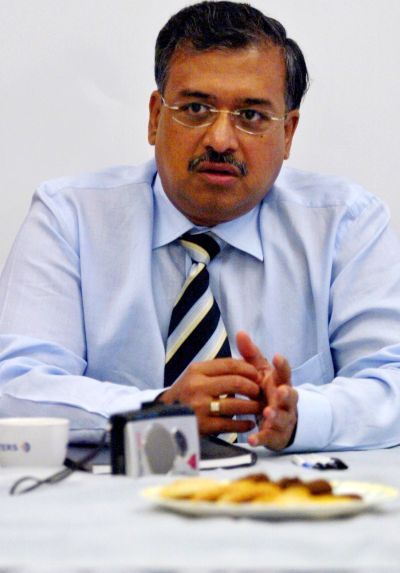 The soft-spoken billionaire pharmaceutical tycoon Dilip Shanghvi is well known as Harry Potter fan. Shanghvi, who started Sun Pharma as a two man operation, now employs 14,000 employees, with products reaching over 40 countries.
The soft-spoken billionaire pharmaceutical tycoon Dilip Shanghvi is well known as Harry Potter fan. Shanghvi, who started Sun Pharma as a two man operation, now employs 14,000 employees, with products reaching over 40 countries.
With the help of 13 acquisitions, over the last 22 years, Shanghvi has built Sun Pharmaceuticals into India’s largest pharmaceutical company, with consolidated sales of over Rs 27,500 crore.
But with his latest acquisition of Ranbaxy, Shanghvi will perhaps need a magic wand.
The all-stock $3.2 billion transaction, announced in April last year, was to propel Sun Pharmaceuticals among the top five generic pharmaceuticals companies in the world and give $250 million of synergy benefits to the merged entity.
But a surprise profit warning by Sun Pharma issued on July 20 reveals chinks in Sun’s armour. As a result of the warning, Sun has lost 13 per cent of its market value in the last one week, with many analysts predicting the stock price to fall further to as low as to Rs 700-levels.
There many reasons why the investors are worried. Post-merger, Sun Pharma may take more time for revival. Also now there is greater uncertainty around supplies from its key Halol plant in Gujarat.
Besides, analysts say, with competition there is severe pricing pressure and company has limited scope to hike prices. Finally, there are no big product approvals expected in the US — the world’s biggest pharmaceutical market — other than Gleevec.
“We trim our FY16 and fiscal 17 earnings per share (EPS) estimates by 23 per cent and 12 per cent respectively. We have not factored in one-time costs likely to be incurred related to the Ranbaxy acquisition,” said an analyst with Japanese financial power house, Nomura.
With 16 acquisitions under his belt, Shanghvi is well known as a turnaround expert. But his biggest gamble with Ranbaxy is turning out to be tricky.
With the share price sliding, Shanghvi is putting on a brave face.
“A key priority for us is to ensure continued good manufacturing practice compliance by enhancing systems, processes and human capabilities to meet global regulatory standards at all our manufacturing facilities. As a part of this process and in order to address the deviations at the Halol facility, various remedial measures have been undertaken,” Shanghvi told analysts on July 20.
The Halol facility is important for the company as it accounts for 10 per cent of Sun Pharma’s sales.
Besides, Shanghvi said remedial steps at Mohali, Dewas, Poanta Sahib and Toansa facilities are also underway. A Sun Pharma spokesperson said at present its four facilities are under consent decree and the company has decided to focus on bringing one of these facilities back into compliance.
“Once that facility comes back into compliance, we will devote similar resources to bring other facilities back into compliance too,” he said.
As a sweetener, Shanghvi said the company’s target for synergy benefits from the Ranbaxy acquisition has increased by 15 per cent to 20 per cent to $300 million as compared to original target of $250 million, but by financial year 2018.
Analysts said the wait for the turnaround will be longer as Sun Pharma will incur increased integration charges with respect to Ranbaxy merger.
These expenses will include charges related to renegotiation of procurement contracts, severance packages and charges related to accounting adjustments are also likely to be incurred.
The company’s research and development costs are likely to remain at around 8% of sales as the company is investing in a specialty pipeline of patented products and generics.
Shanghvi is also building a specialty ophthalmology team in the US and a new sales and marketing team in anticipation of Xelpros launch and for other in-licensing opportunities.
Sun Pharma is also building out a team to handle regulatory and commercial aspects of MK-3222, a monoclonal antibody developed for psoriasis.“As a result of acquisition of Ranbaxy, we're looking at possibility of launching branded products in emerging markets. We're also looking at developing products for regulated markets with a view to not only develop a private label business, but also to use our product for branding in these markets.
This is with a view to create a future potential upside. It will potentially impact our ability to grow profitability till the business becomes self-sustaining and profitable,” Shanghvi said. Shanghvi — who successfully won many battles in the past — is clearly on the right track. The billion dollar question is when the investors come back to the company’s fold.








 © 2025
© 2025